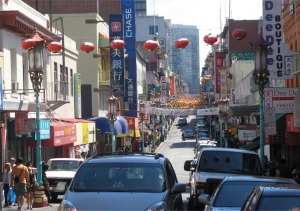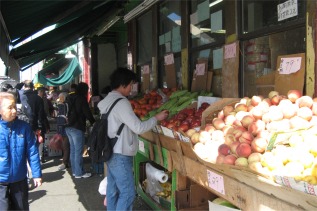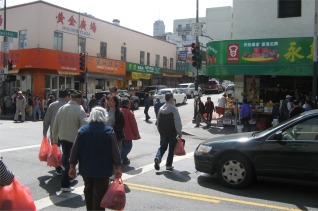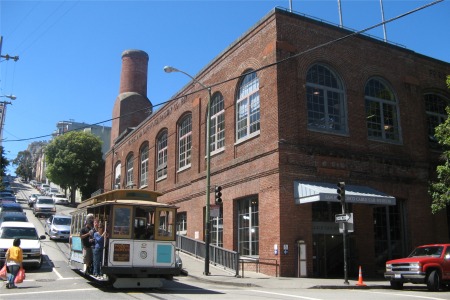 Cable Car Barn, Powerhouse and Museum |
Andrew Smith Hallidie tested the first cable car in 1873, on Clay Street, San Francisco. His idea for a steam engine powered, cable driven, rail system was conceived in 1869, after witnessing horses being whipped while they struggled on the wet cobblestones to pull a horsecar up Jackson Street. As the story goes, the horses slipped and were dragged to their death.
His system proved to be a success, and by 1889 cable cars were running on eight lines. Before the 1906 earthquake and fire, over 600 cars were in use.
By 1947, the lower operational costs of buses prompted Mayor Lapham to declare, "the city should get rid of all cable car lines as soon as possible." After a huge public outcry, the present three lines were retained.
The Cable Car Museum was established in 1974, and was operated by the Friends of the Cable Car Museum as a nonprofit educational facility. Located at the heart of the cable network in the historic Washington/Mason cable car barn and powerhouse, the museum deck overlooked the huge engines and winding wheels that pulled the four separate endless cables. Downstairs was a viewing area of the large sheaves and cable lines entering the building through the channels under the street. On display were various mechanical devices such as grips, track, cable, brake mechanisms, tools, detailed models, and a large collection of historic photographs. The museum also housed three antique cable cars from the 1870s.
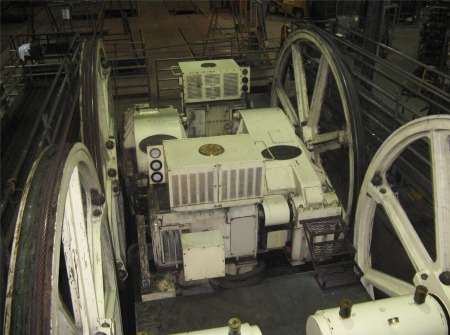 Two of the Cable Driving Engines |
The cars' propulsion mechanism employed a jaw which grabbed the cable through a slot above the cable channel, and by adjusting the strength of the grip, the car could accelerate up to the cable speed of 9.5mph. The process required great strength from the operator since he was effectively lifting the heavy cable.
To the side of the huge machinery there was a small workshop area containing lathes, milling machines, drills and other machining devices. It reminded me of my mid-teen years, working in a steelworks. Needless to say, I spent considerable time at the museum.
|
|
|
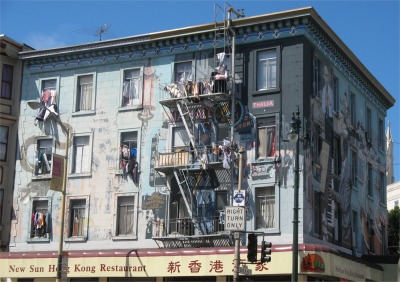 Washing and Drying Day - Chinese Laundry Perhaps |
I traversed the alleys between Grant Avenue and Stockton Street, which echoed the sights, sounds and smells of the Orient, soaking up the atmosphere. Thousands of Chinese people were going about their daily business of running shops, groceries and restaurants, or were just standing on corners exchanging news and gossip. When Dan and I were here a few nights ago for a meal, the streets were deserted, but in the day they heaved with humanity.
I headed down to Market Street with the vain hope of doing some present shopping, but I lacked inspiration and left empty handed. As I headed back to my hotel, I called in at the John Pence Gallery. The works on display were primarily still life and cityscapes, with the odd seascape and portrait. A variety of media had been employed: oil, gouache, pastel and pencil. I did find one of the large cityscapes inspirational, it portrayed a street junction after a downpour, all lit up at night; the size and colours made it work for me.
I was glad to get back to the hotel. I had picked up a bug which made it seem as though I had pulled every muscle in the upper half of my body, and I felt the cold, which was unusual for me.

